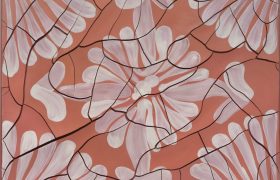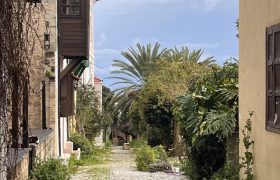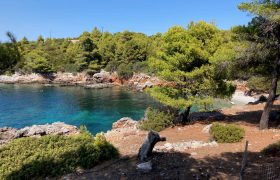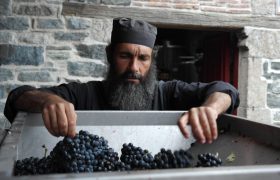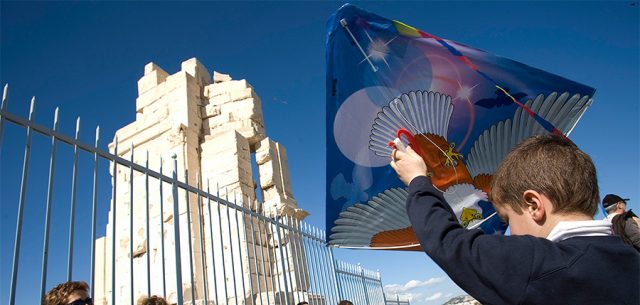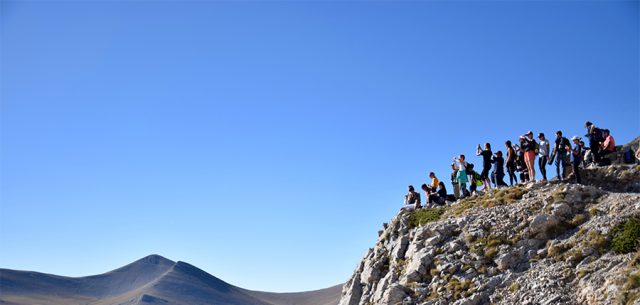Playing the Goat
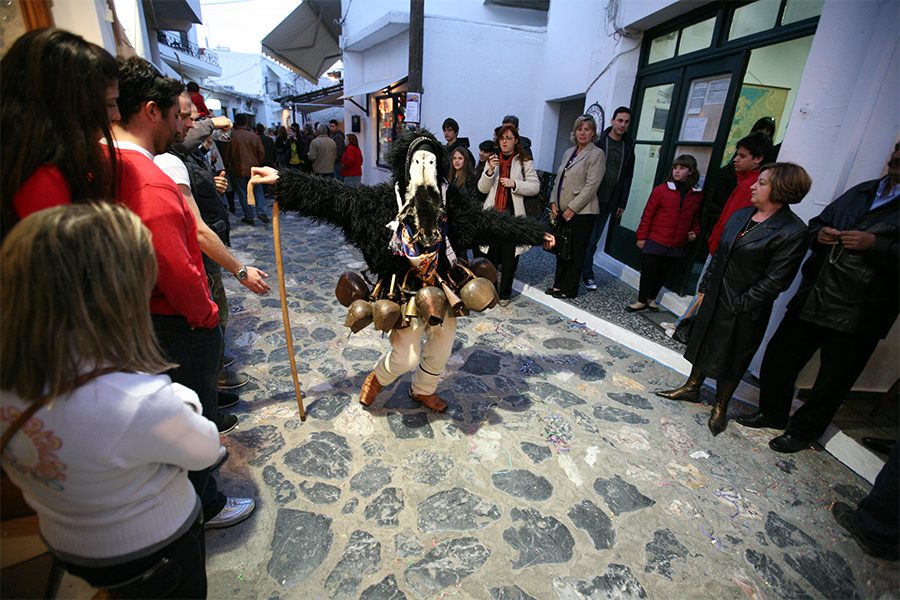
Danylo Hawaleshka steps back in time with the cacophonous, kid-clad dancers of Skyros.
We’re lost. And we know we’re lost because it’s dark out and we’ve just driven onto the military base on the Aegean island of Skyros. We make a quick U-turn, followed by a phone call to our genial host-to-be – a bon vivant by the name of Dimitris – who offers to meet us nearby and guide us down a dirt road in the proverbial middle-of-nowhere.
Soon enough we arrive at his hobbit-like hovel, disembark and shuffle toward a beacon of fluorescent light streaming from a tiny doorway. Inside we go back in time, into a male bastion where the local menfolk congregate to escape their wives, to eat and drink in peace. And, on this night – the eve of the island’s famous Goat Dancers’ Festival marking the start of Lent – to belt out a few songs.
The ancient traditions that permeate the Goat Festival – a sort of Greek Mardi Gras – cause it to stand out among the many held in Greece during the three weeks prior to the period of fasting and prayer that ends with Easter.
The goat dancer is a fearsome sight. His costume consists of a mask made from the pelt of a kid, soaked with ouzo to drown out its stench.
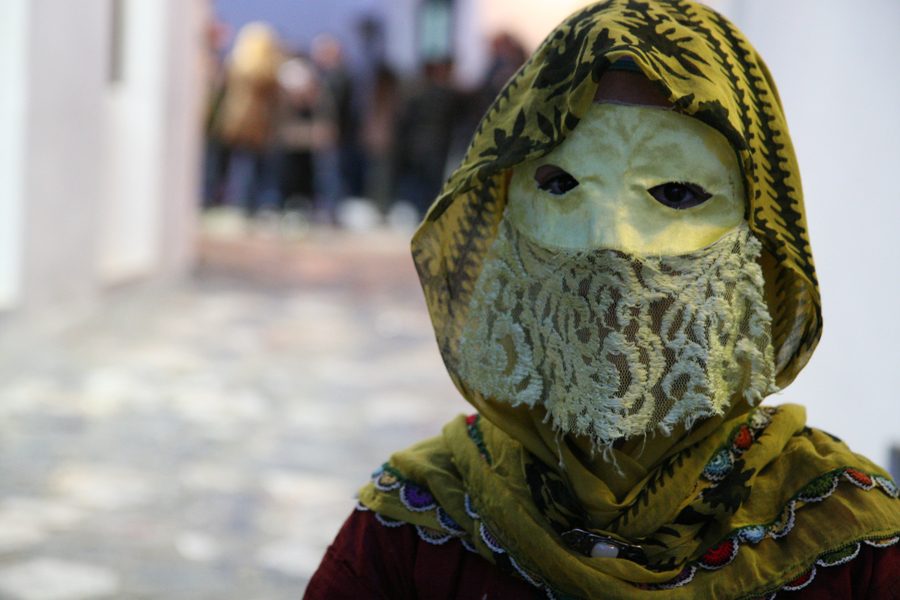
He wears a long-haired, hooded coat made of heavy black wool. A pillow is stuffed under his jacket to give him a hunchback’s appearance. Goat bells, perhaps 30 in all and some as big as cantaloupes, are tied securely around his waist. With the whole outfit weighing as much as 70kg, the yeros must be powerful if he is to parade at night through the narrow streets of the island’s capital.
Dimitris Mikes, 22, began wearing the clothes of the yeros when he was just five years old. In broken English, he grapples to find the words to describe what it is like to be a yeros. “You feel better,” he says, having just dressed for the evening’s festivities. Unsatisfied with his answer, he pauses before landing on the right word: “Ecstasy.”
With a series of distinctive gaits, the yeros modulates the din of the bells. Carrying a wooden staff, he travels alone or in packs of a half-dozen or more. At times the cacophony borders on the demonic. Kendra Chapin, an American who now makes Skyros her home, says she’s never heard anything like the clanging of the bells. “It’s overwhelming,” Chapin says. “There are no words to describe the feeling. You have to experience it for yourself.”
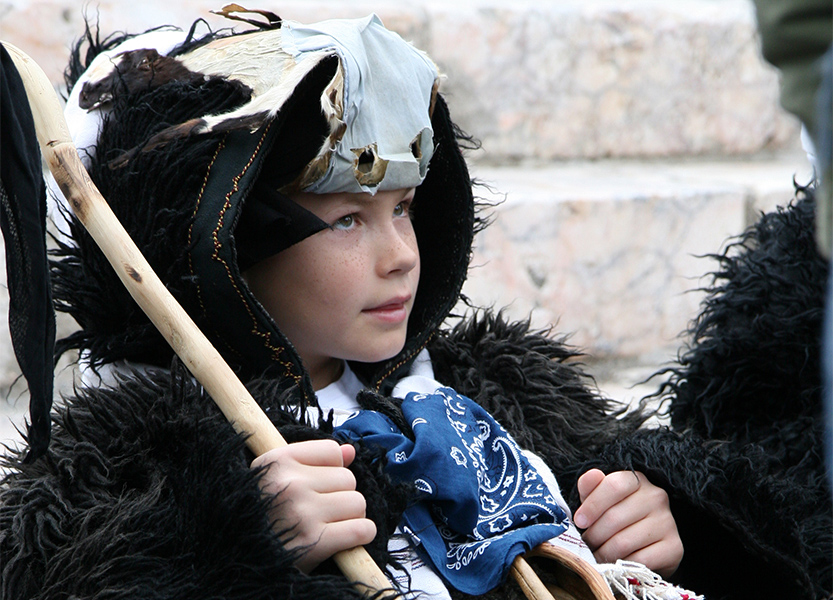
The locals start celebrating early. On the night before the first wave of visitors arrives for the long weekend (the influx more than doubles the island’s 3,000-strong population), our host Dimitris and his buddies gather around his oblong table. There are about eight or nine men seated around it at any one time, passing around plates laden with stewed rooster. A comforting fire crackles gently in one corner, warding off the chill that lingers outside in these dying days of winter. A hefty bottle of homemade tsipouro is passed around.
Religious icons and family photos share wall space with the remains of a bull’s dried, metre-long penis. This is a man’s world, after all.
One of the men launches into a soulful ballad about Smyrna (modern-day Izmir in Turkey). “I love you because you’re beautiful,” he sings mournfully. “I love you because it’s you – and I love the whole world because you live in it.” The man serenades his wife with it every year on her name day. Considering that these men gather like this most nights of the week, one visitor wondered aloud, “So when do you get to see your wife?” Without missing a beat, the singer looked up from his plate and retorted: “You don’t know my wife.”
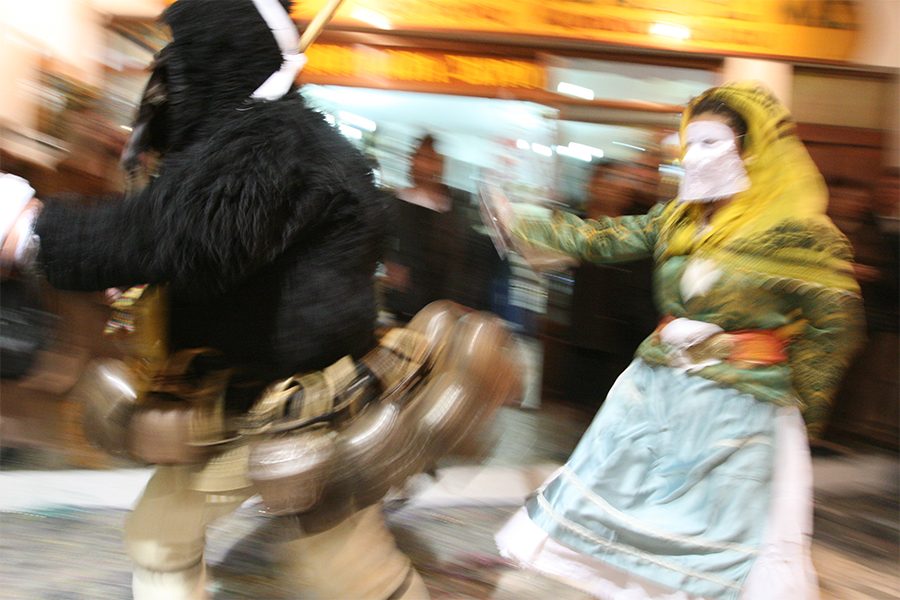
It is said that the tradition of the goat dancer started in ancient times, when a sudden and particularly severe snowstorm killed a shepherd’s entire flock. Distraught, he skinned the goats, dressing himself in some of the pelts, and he tied their bells around his waist. In mourning, he paraded through town. The next year, the townsfolk commemorated the event by recreating his walk, and thus a pagan tradition was born. Or so they say.
Today, the yeros is accompanied by the masked korela (often a man dressed as a woman wearing a traditional blouse and skirt). “She” is the wife of the yeros and trails him with the swirl of a waving kerchief. The frangos is the third and last of the festival’s central characters. Usually a man, he is dressed in ludicrous clothes limited only by one’s own imagination. He is known as either the fool or foreigner.
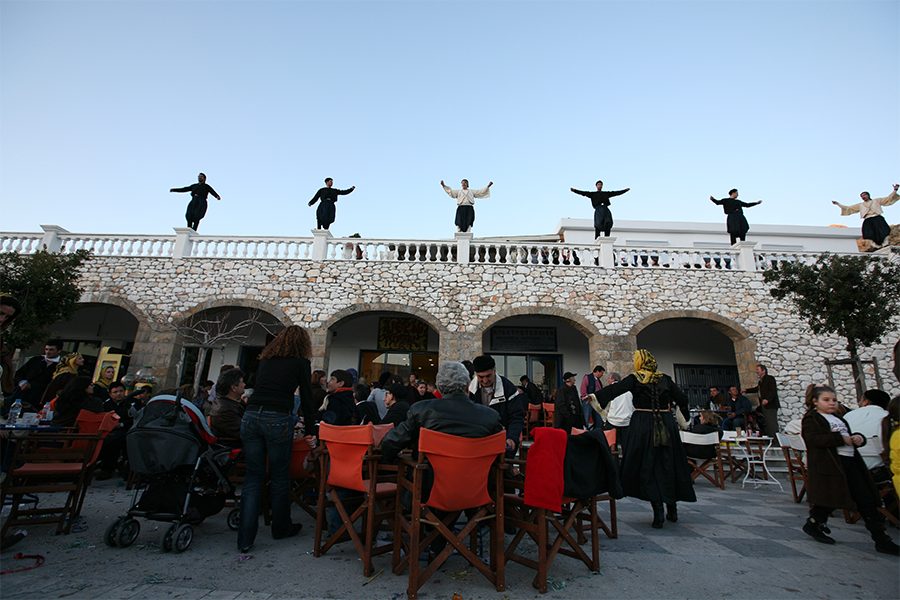
While the night remains the realm of the yeros, korela and frangos, the days belong to a couple of outrageous parades, one held on the Saturday, the other on Sunday. Participants dress in drag, derisively portray Orthodox priests, or wear just about anything that could easily serve as an elaborate Halloween costume. The parades can be political – this year the priests were pilloried for selling land for a massive wind farm planned for the southern part of the island. Regardless of theme, the parades end up in the capital’s central square, which is crammed to the rafters with onlookers -many quite literally hanging from the rooftops.
On Clean Monday, the wildness tames, the yeros disappear, and the townsfolk don their traditional costumes, many dating back more than 100 years. They walk about the centre, and begin dancing in the square at noon. Soon, anyone can join in, and many do. The dancing goes on well into the evening.
Amanda Simpson, who breeds the rare Skyrian horse in the hamlet of Molos, marvels at the care and attention that the families put into preserving their traditions. Some of the costumes smell of mothballs, she says, an odour that makes her think of the many generations of Skyrians who have worn these clothes. Watching them all stroll through the capital, says Simpson, “You’ll feel like you’ve walked back in time.”
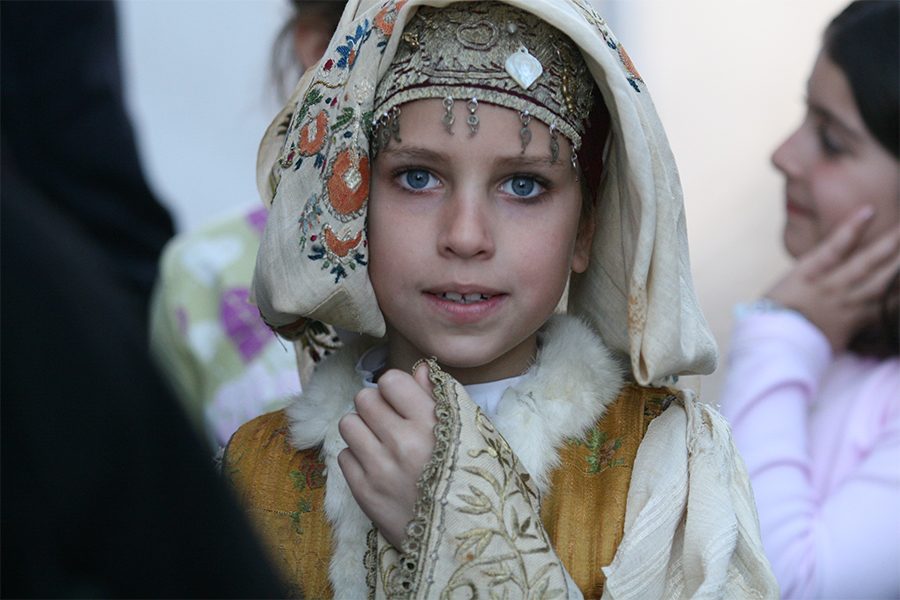
Skyros is part of the Sporades archipelago that runs along Greece’s eastern coast. It is accessible by ferry or plane, although the island doesn’t exactly encourage tourism and keeps hotel development in check.

